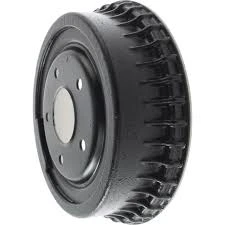
-
 Afrikaans
Afrikaans -
 Albanian
Albanian -
 Amharic
Amharic -
 Arabic
Arabic -
 Armenian
Armenian -
 Azerbaijani
Azerbaijani -
 Basque
Basque -
 Belarusian
Belarusian -
 Bengali
Bengali -
 Bosnian
Bosnian -
 Bulgarian
Bulgarian -
 Catalan
Catalan -
 Cebuano
Cebuano -
 Corsican
Corsican -
 Croatian
Croatian -
 Czech
Czech -
 Danish
Danish -
 Dutch
Dutch -
 English
English -
 Esperanto
Esperanto -
 Estonian
Estonian -
 Finnish
Finnish -
 French
French -
 Frisian
Frisian -
 Galician
Galician -
 Georgian
Georgian -
 German
German -
 Greek
Greek -
 Gujarati
Gujarati -
 Haitian Creole
Haitian Creole -
 hausa
hausa -
 hawaiian
hawaiian -
 Hebrew
Hebrew -
 Hindi
Hindi -
 Miao
Miao -
 Hungarian
Hungarian -
 Icelandic
Icelandic -
 igbo
igbo -
 Indonesian
Indonesian -
 irish
irish -
 Italian
Italian -
 Japanese
Japanese -
 Javanese
Javanese -
 Kannada
Kannada -
 kazakh
kazakh -
 Khmer
Khmer -
 Rwandese
Rwandese -
 Korean
Korean -
 Kurdish
Kurdish -
 Kyrgyz
Kyrgyz -
 Lao
Lao -
 Latin
Latin -
 Latvian
Latvian -
 Lithuanian
Lithuanian -
 Luxembourgish
Luxembourgish -
 Macedonian
Macedonian -
 Malgashi
Malgashi -
 Malay
Malay -
 Malayalam
Malayalam -
 Maltese
Maltese -
 Maori
Maori -
 Marathi
Marathi -
 Mongolian
Mongolian -
 Myanmar
Myanmar -
 Nepali
Nepali -
 Norwegian
Norwegian -
 Norwegian
Norwegian -
 Occitan
Occitan -
 Pashto
Pashto -
 Persian
Persian -
 Polish
Polish -
 Portuguese
Portuguese -
 Punjabi
Punjabi -
 Romanian
Romanian -
 Russian
Russian -
 Samoan
Samoan -
 Scottish Gaelic
Scottish Gaelic -
 Serbian
Serbian -
 Sesotho
Sesotho -
 Shona
Shona -
 Sindhi
Sindhi -
 Sinhala
Sinhala -
 Slovak
Slovak -
 Slovenian
Slovenian -
 Somali
Somali -
 Spanish
Spanish -
 Sundanese
Sundanese -
 Swahili
Swahili -
 Swedish
Swedish -
 Tagalog
Tagalog -
 Tajik
Tajik -
 Tamil
Tamil -
 Tatar
Tatar -
 Telugu
Telugu -
 Thai
Thai -
 Turkish
Turkish -
 Turkmen
Turkmen -
 Ukrainian
Ukrainian -
 Urdu
Urdu -
 Uighur
Uighur -
 Uzbek
Uzbek -
 Vietnamese
Vietnamese -
 Welsh
Welsh -
 Bantu
Bantu -
 Yiddish
Yiddish -
 Yoruba
Yoruba -
 Zulu
Zulu
do brake drums need to be replaced
Do Brake Drums Need to Be Replaced?
Maintaining the safety and functionality of your vehicle is crucial, and one of the key components of your braking system is the brake drum. Understanding when and why brake drums need to be replaced can help you extend the life of your vehicle’s braking system and ensure optimal performance.
What Are Brake Drums?
Brake drums are cylindrical components that are crucial for the operation of drum brake systems. They work in conjunction with brake shoes, which press against the inner surface of the drum to create friction, slowing down the vehicle. While modern vehicles increasingly utilize disc brakes, many still have drum brakes on the rear wheels, especially in sedans and smaller cars.
Signs That Brake Drums May Need to Be Replaced
1. Noisy Operation One of the most common indicators that your brake drums need attention is an unusual noise when braking. If you hear grinding, squeaking, or rattling sounds, it could mean that the brake shoes are worn down, leading to metal-on-metal contact. This not only damages the drums but also critically impacts braking performance.
2. Reduced Brake Performance If you notice that your vehicle takes longer to stop than usual or feels less responsive when you apply the brakes, this could signal deterioration in the brake drums or shoes. A decline in performance can be dangerous, especially in emergency situations.
3. Vibrations or Pulsations Feeling vibrations in the brake pedal or steering wheel during braking can suggest that the brake drums are warped or unevenly worn. This issue can lead to less effective braking and should be inspected promptly.
do brake drums need to be replaced

4. Visual Inspection Regularly inspecting your brake components can help you catch issues early. Look for heat spots, cracks, and surface wear on the drums. If the surface is rough or pitted, it may be time for a replacement.
5. Thickness Brake drums have a specific minimum thickness that they must maintain for effective braking. If measured thickness falls below this threshold, it's essential to replace them. Excessively worn drums can cause brake shoes to wear out more quickly.
The Replacement Process
If it’s determined that your brake drums need to be replaced, the process should ideally be performed by a qualified mechanic. This typically involves removing the wheel and brake assembly, taking off the old drum, and inspecting associated components like the brake shoes and hardware. Once the new drum is installed, the brake system should be tested for proper functionality.
Maintenance Tips
To extend the life of your brake drums, regular maintenance is essential. This includes timely brake fluid changes, ensuring the braking system is free of moisture and contaminants, and adjusting the brake shoes as necessary. Also, mindful driving—like avoiding sudden stops and hard braking—can significantly prolong the lifespan of your braking components.
Conclusion
Brake drums are a vital part of your vehicle's braking system, and recognizing the signs that they need replacement can prevent dangerous situations on the road. Regular inspections, attentive driving habits, and prompt replacement of worn parts are essential for maintaining a safe and reliable vehicle. By prioritizing brake system care, you ensure both your safety and that of others on the road. Always consult a professional mechanic if you're unsure about your brake system's condition to keep your vehicle performing at its best.
-
What Are Drum BrakesNewsJul.07,2025
-
Understanding Brake Drum MaterialNewsJul.07,2025
-
Semi-Trailer Brake Drum: A Key Component for Extreme Loads and Long-Distance TransportNewsJul.07,2025
-
Drum Brake Pads for SaleNewsJul.07,2025
-
Brake Drums for SaleNewsJul.07,2025
-
Brake Drum ManufacturerNewsJul.07,2025
-
Aluminum Brake Drums: The Future of High-Performance CarsNewsJul.07,2025
